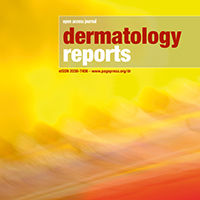The prevalence and determinants of body dysmorphic disorder among young social media users: A cross-sectional study

Accepted: 28 October 2020
HTML: 146
All claims expressed in this article are solely those of the authors and do not necessarily represent those of their affiliated organizations, or those of the publisher, the editors and the reviewers. Any product that may be evaluated in this article or claim that may be made by its manufacturer is not guaranteed or endorsed by the publisher.
Social media that is heavily used in Saudi Arabia has been linked to a negative impact on body image satisfaction. The objective of the current study was to examine the burden, determinants, and impacts of Body Dysmorphic Disorder (BDD) among a community sample of social media users in Saudi Arabia. The Internet-based cross-sectional study was conducted among social media users during January and February 2020. BDD was assessed using a validated BDD Questionnaire. A total of 1010 participants were included in the current analysis. A total of 42 (4.2%) met the criteria of BDD, with higher prevalence in younger participants. The defects of high concerns were skin disfigurements (64.2%) and hair issues (42.3%). BDD was significantly associated with spending a longer time on Snapchat and Instagram and less interest in religious topics. BDD group was more likely to compare their appearance with famous people in social media. BDD group reported more harassment and more history of psychiatric problems. There is a need to educate the public about the risk of BDD and to promote safe social networking.
PAGEPress has chosen to apply the Creative Commons Attribution NonCommercial 4.0 International License (CC BY-NC 4.0) to all manuscripts to be published.





 https://doi.org/10.4081/dr.2020.8774
https://doi.org/10.4081/dr.2020.8774



